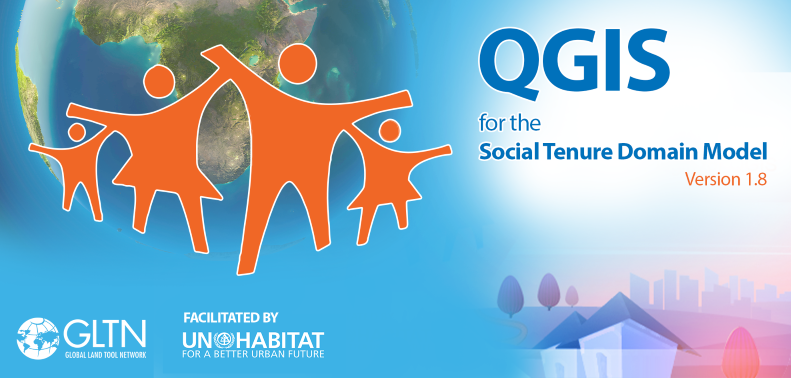 STDM 1.8 is a full release which includes enhanced features, functionality and stability improvements. The biggest change for this release is the migration and support of QGIS 3; this not only guarantees stability and continuous support for future releases of QGIS but also enables STDM to make use of modern and improved functionalities of QGIS. Included in this release is the tight integration of social tenure relationship functionality with data management forms, more reliable data import module that is stable and guarantees consistency during its operation.
STDM 1.8 is a full release which includes enhanced features, functionality and stability improvements. The biggest change for this release is the migration and support of QGIS 3; this not only guarantees stability and continuous support for future releases of QGIS but also enables STDM to make use of modern and improved functionalities of QGIS. Included in this release is the tight integration of social tenure relationship functionality with data management forms, more reliable data import module that is stable and guarantees consistency during its operation.
Download “STDM 1.8.1 64-bit Installer” STDM-1.8.1 Final-x86_64.exe – Downloaded 1912 times – 1.47 GB
The following sections summarize changes in different functional areas of STDM 1.8.
Breaking Changes
Keep note of the following critical changes
1. Going forward, STDM 1.8 and above will only support QGIS 3 and above.
2. The code base for STDM 1.8 will only work with Python 3 and above
3. Older versions of STDM will not work with QGIS 3 and above
Support for QGIS 3
STDM now supports QGIS 3 and above. This means, STDM will now use the latest features, functions and libraries available with QGIS 3. Key among these features is the redesigned Layout Composer that integrates with STDM to design and generate documents. However, with this release of STDM1.8 and any future releases, STDM will no longer have backward compatibility with older versions of QGIS. We strongly encourage our users who are still using the previous versions of STDM and QGIS to upgrade so as to take advantage of the new enhancements.
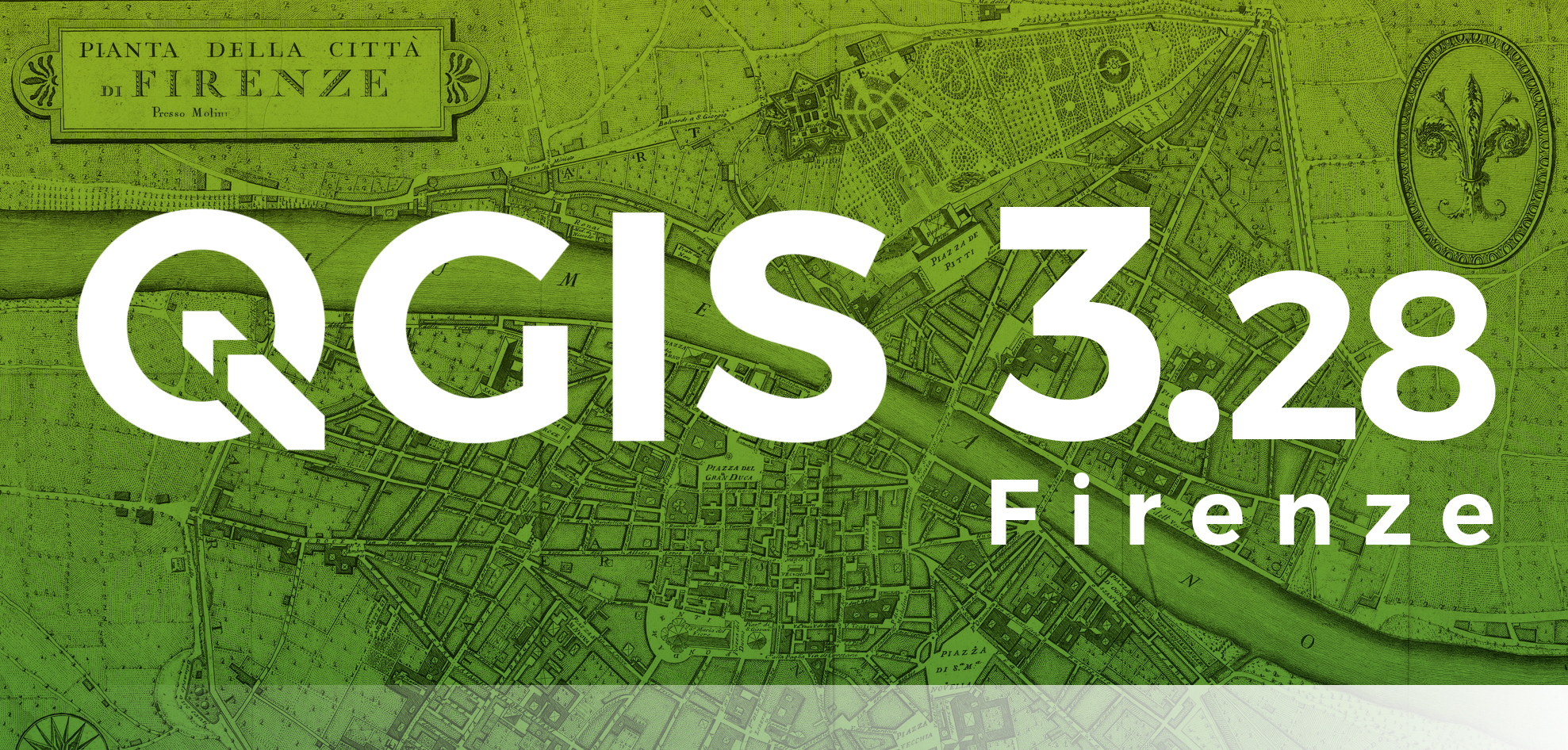
STR Viewer on the Entity Browser
Previously, you could only view Social Tenure Relationship (STR) records by accessing the View Social Tenure Relation module, even from that, you could not tell easily which records had STR already defined. This has been improved; we now have an STR viewer panel on the Entity Browser for the entities (party and spatial unit) that are participating in Social Tenure Relationship. To see the STR details for a record, select the record on the entity browser (left hand side) then the STR viewer (right hand side) will be populated with the STR details.
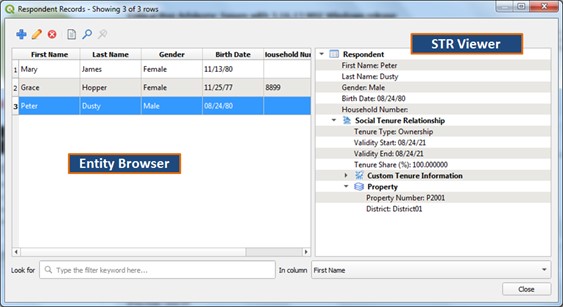
Create Social Tenure Relationship Records in Data Entry Forms
Now you can create Social Tenure Relationship (STR) records directly from the data entry forms of entities (party/spatial unit) that participate in STR.
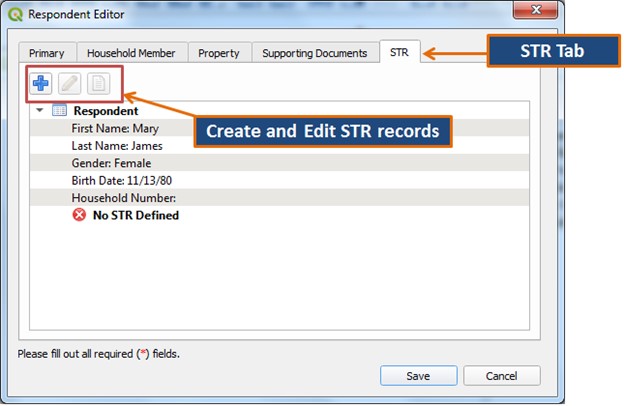
Advance Search using Multiple Fields
Entity browser has a new tool for searching data using multiple fields in an entity. When you activate the tool, a dialog form with multiple fields will appear, you enter the values to filter the records in the entity browser.
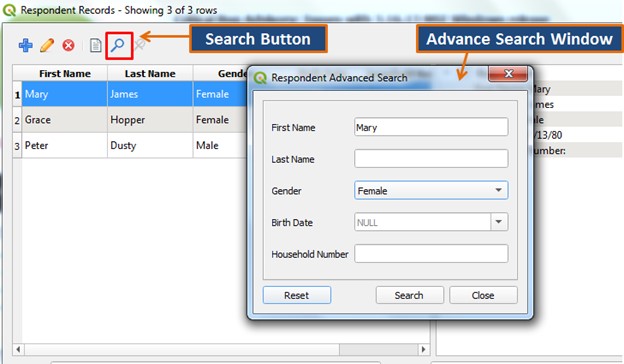
Save Import Sessions
Previously, when the import process aborted, there was no way of re-loading the session with the earlier selections. This meant the user had to repeat the whole import process (finding the import file, choosing the import-to entity and selecting/sorting import fields) this process was tiring and prompt to errors especially when dealing with huge amounts of data. Now, with STDM 1.8 the import session is saved automatically to an external file and in case the process aborts, the user will be prompted to restore the session the next time they open the import module.

The import module also allows the user to save and reload the session manually before starting the import process.
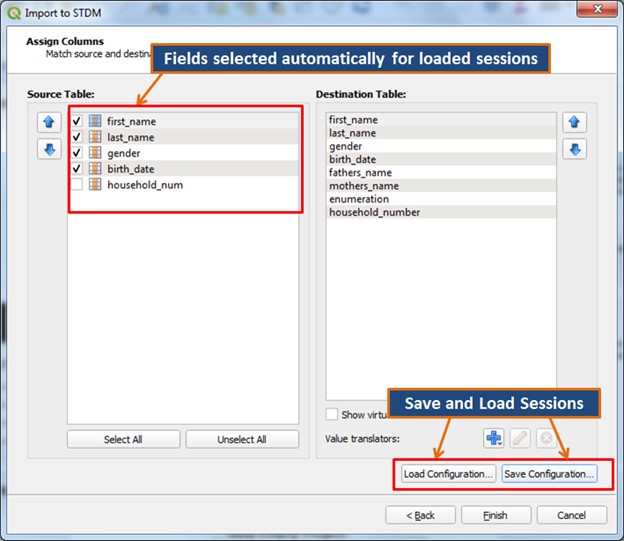
Configure Sorting Column for Entity Browser
You can now set a column to use for sorting data in the Entity Browser. Previously, when data was loaded in the Entity Browser it was always sorted by the entity internal Id. You can access the sorting setup and other general settings in the Options module.
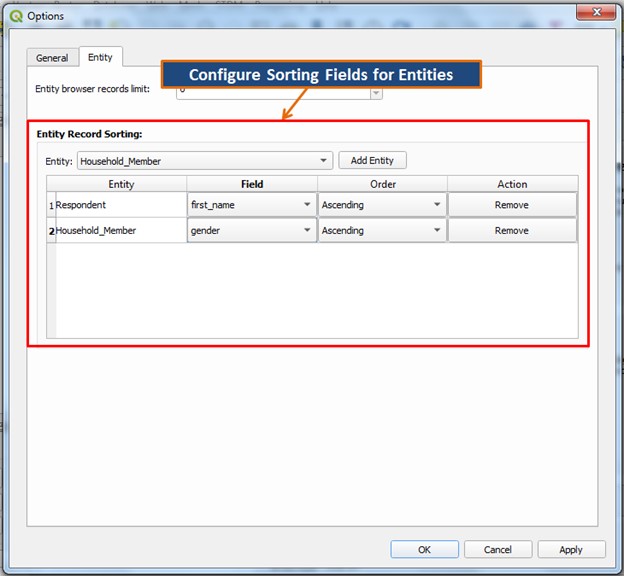
General
• To enhance general application performance, going forward we shall only support 64 bit computer architecture, this means we shall distribute STDM using only one 64 bit installer.
• For developers, STDM 1.8 now supports Python 3 for development.

